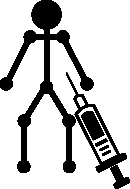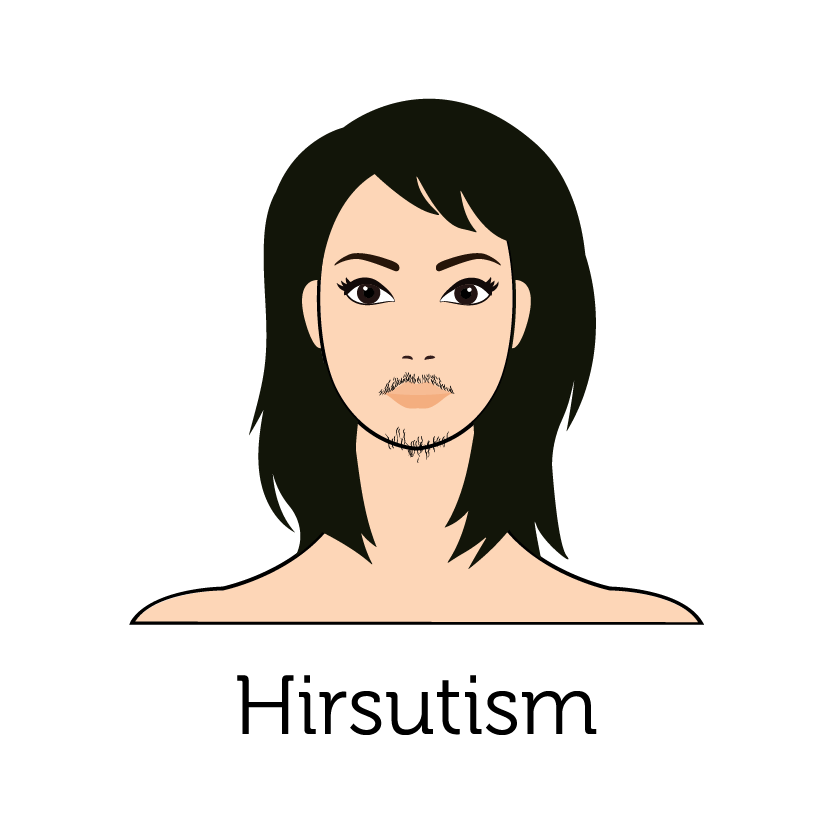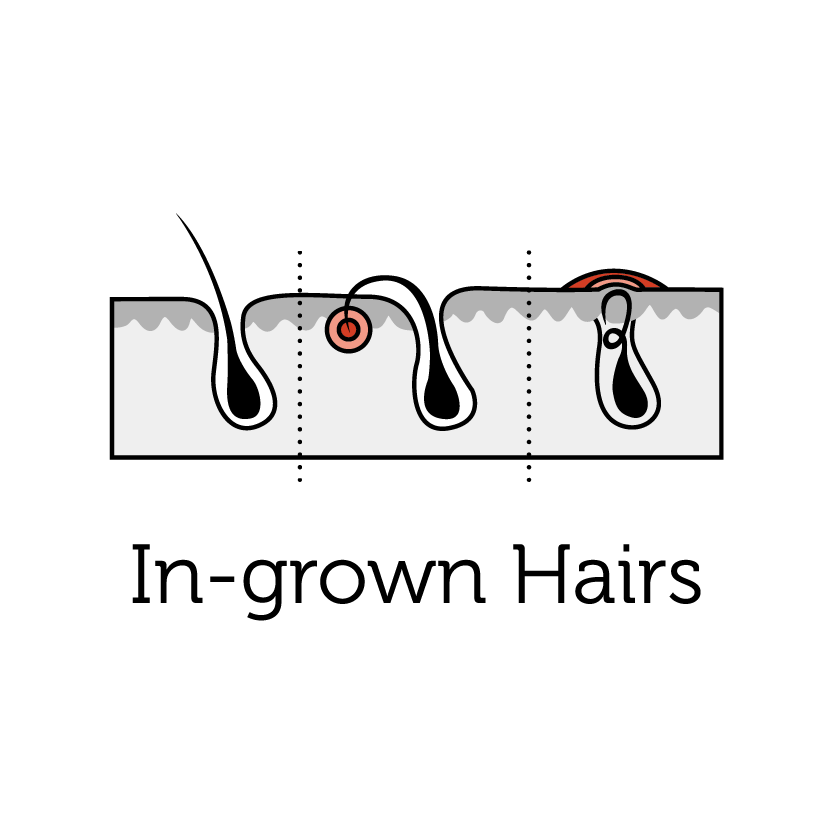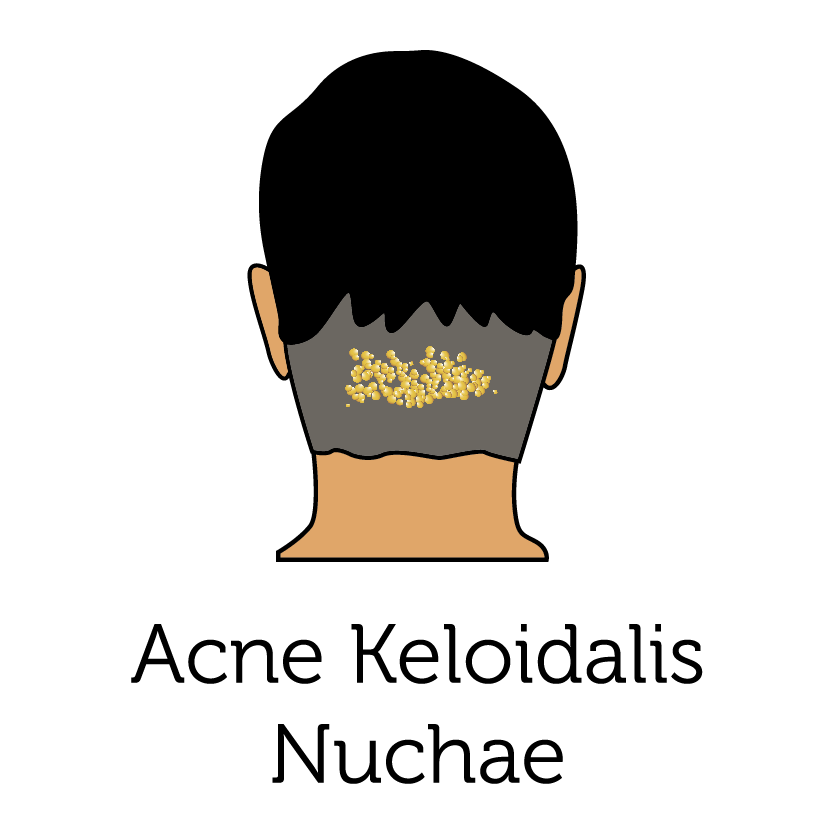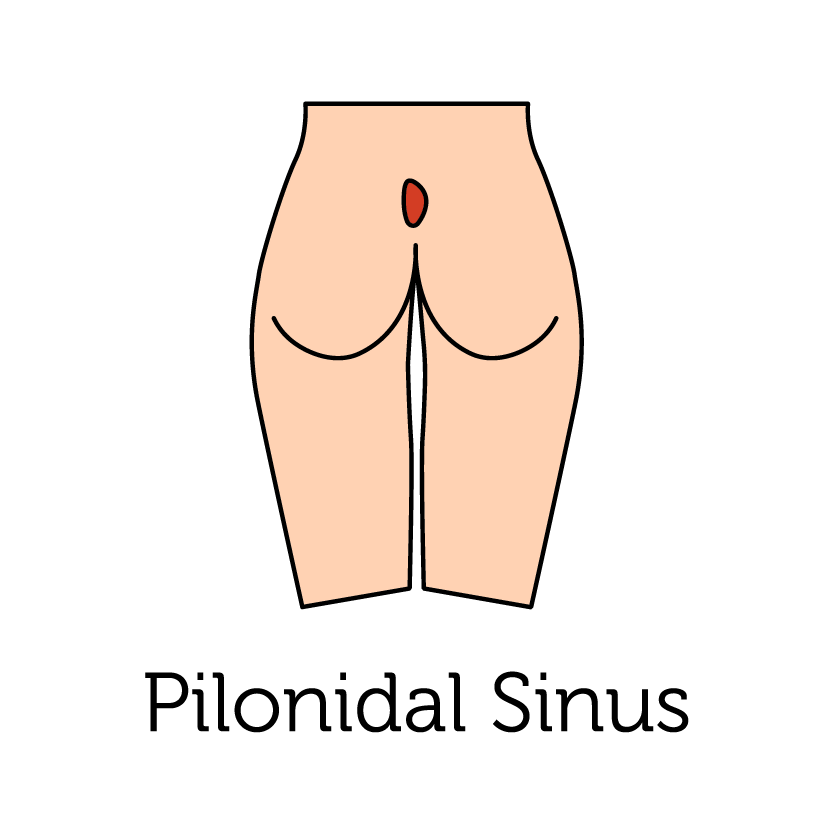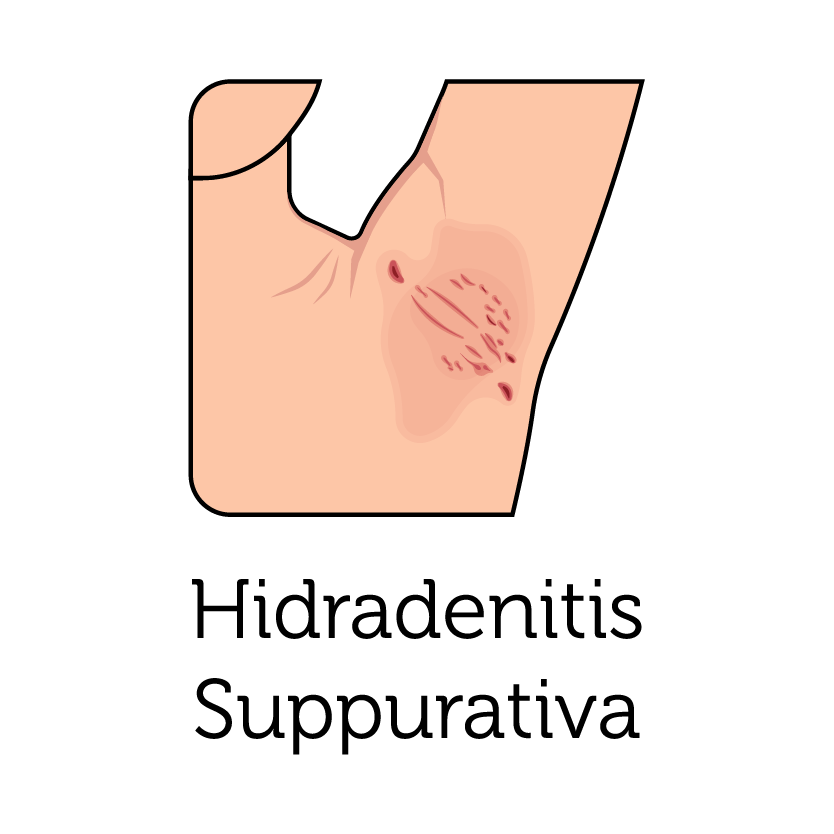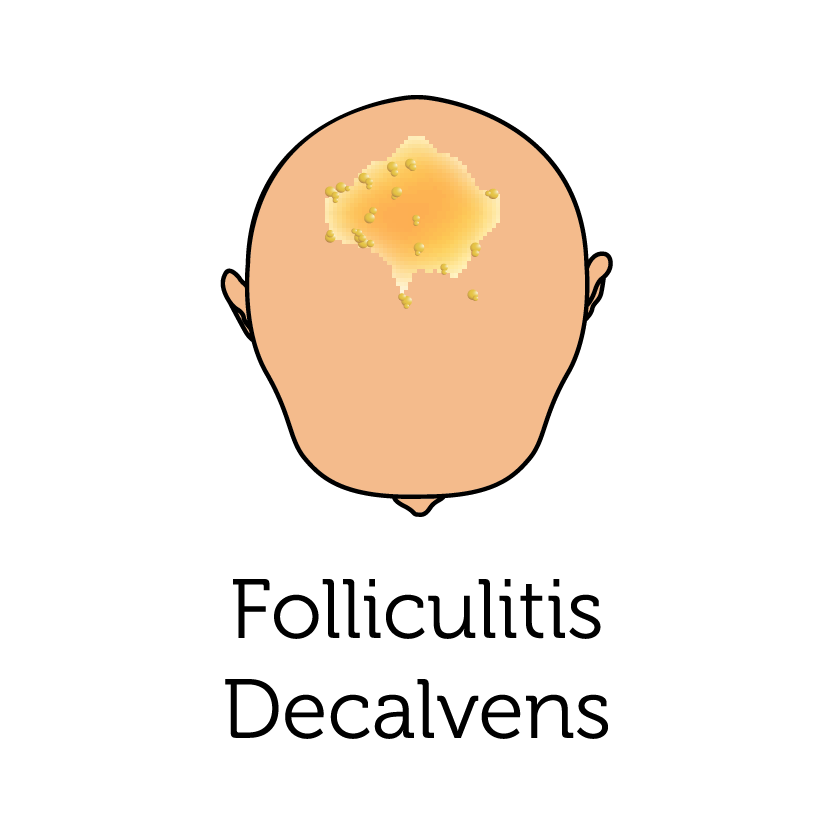Medical Laser Hair Removal London, UK

“Safe, Doctor-Led Hair Removal for Complex Skin.”
We use advanced laser technology to manage hair-driven conditions and deliver effective, skin-safe results for every skin tone.
At Rejuvence Clinic, specialist doctors and experienced laser aestheticians work together to provide trusted, medically led laser hair removal for both cosmetic and complex skin conditions. Many issues linked to abnormal hair growth—such as recurrent abscesses, infections, ingrown hairs and hypertrophic or keloid scarring—are especially common in skin of colour and require expert medical oversight. Using advanced, skin-type-optimised lasers and tailored medical support when needed, we offer safe, effective and long-lasting solutions. Our expertise makes Rejuvence one of London’s most trusted clinics for treating hair-related skin problems.
What laser is used at Rejuvence?
At Rejuvence we use Aerolase – a versatile laser therapy designed to address a wide range of skin concerns. Aerolase is an award-winning American laser manufacturer known for its innovative devices, including the Neo Elite and Era Elite lasers. These devices employ patented 650-microsecond and 300-microsecond laser pulse technology, delivering precise energy to target tissues with minimal discomfort and downtime. This makes Aerolase treatments ideal for patients seeking a uniquely gentle, highly efficacious and comprehensive medical grade laser treatment for their skin concerns.
For Medical Hair Removal we use the Aerolase Neo Elite. This is a Nd:YAG non-ablative laser that specifically targets melanin in hair follicles. The Neo Elite has a 650-microsecond pulse duration. This is significantly shorter than with other similar lasers. As a result it is able to deliver high energy settings safely in all skin types and also causes much less pain and does not need cooling.
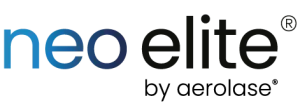
What is Alexandrite Laser?
The alexandrite 755nm laser is a solid state laser. It is able to penetrate 3 mm into the skin with moderate absorption by melanin. It’s considered to be the gold standard for hair removal using laser. It is suitable for both lighter and slightly darker skin types. Generally this means skin types I to III. The Alexandrite laser has been used to treat a number of different skin conditions including ingrown hairs, pilonidal sinus, hidradenitis suppurativa, as well as cosmetic laser hair removal.
What is a Nd:YAG laser?
The Nd:YAG 1064nm laser is also a solid state laser and has the least absorption by melanin and hence is very safe for darker skin types. It has much fewer side-effects in darker skin types especially compared to conventional lasers used for hair removal such as IPL. It can penetrate to around 4 mm into the skin and is generally considered to be the gold standard for skin types IV to VI.
Medical Conditions
Hirsutism
Hirsutism is a male pattern of hair growth arising in women. This usually starts during puberty and results typically in increasing hair growth in the moustache and beard areas. Hirsutism often has a genetic cause and is the result of a state of hyperandrogenism – increased amount of circulating androgenic hormones such as testosterone. This abnormal hormonal state is most commonly associated with polycystic ovarian syndrome, certain cases of diabetes as well as obesity.
Hirsutism is usually first identified as a teenager and can worsen with age. Excess hair growth can occur in a single site or multiple sites and include facial hair – moustache, beard, eyebrows; abdomen – the diamond shape of pubic hair extending to the belly button; chest – around nipples or more extensive growth; upper back and even the Inner thighs. The Ferriman-Gallwey Hirsutism Assessment Chart comprises a scoring system for assessing the severity of hirsutism in women.
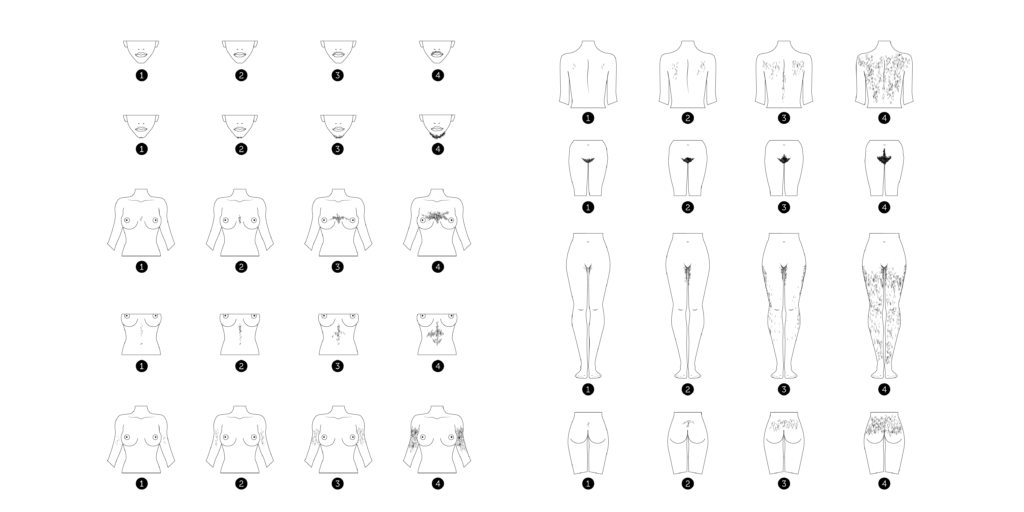
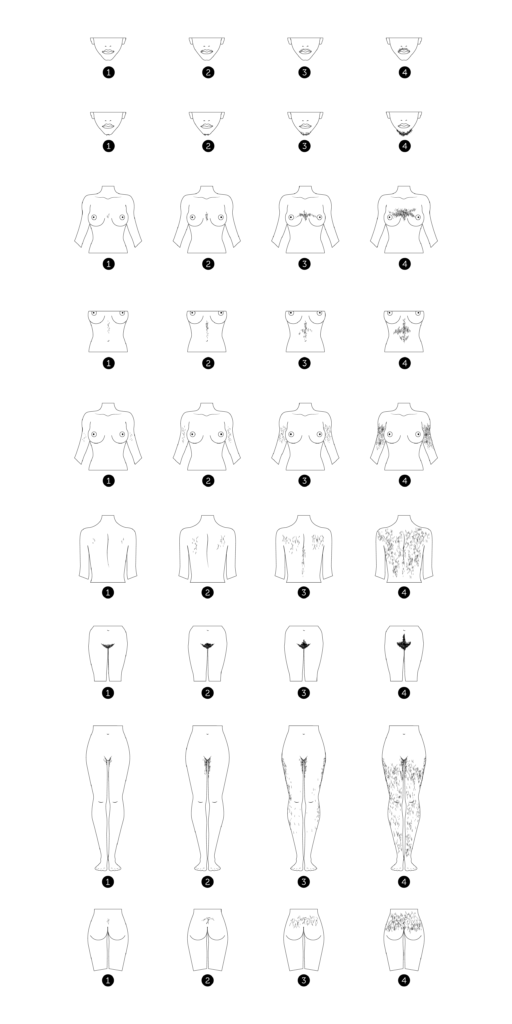
Excess hair growth in hirsutism can be the cause of great embarrassment and psychological distress. Laser hair removal is a relatively permanent form of hair removal that works well in hirsutism.
Book a consultation with Rejuvence to get options for medical laser hair removal for hirsutism.
‘Razor Bumps’ and ‘In-grown Hairs’
‘Razor bumps’ also known as ‘shaving bumps’ are medically termed pseudofolliculitis. Shaving in certain skin types and on certain parts of the body can result in inflammation of the hair follicle and the surrounding skin. This inflammation is usually the result of ingrown hairs developing after shaving.

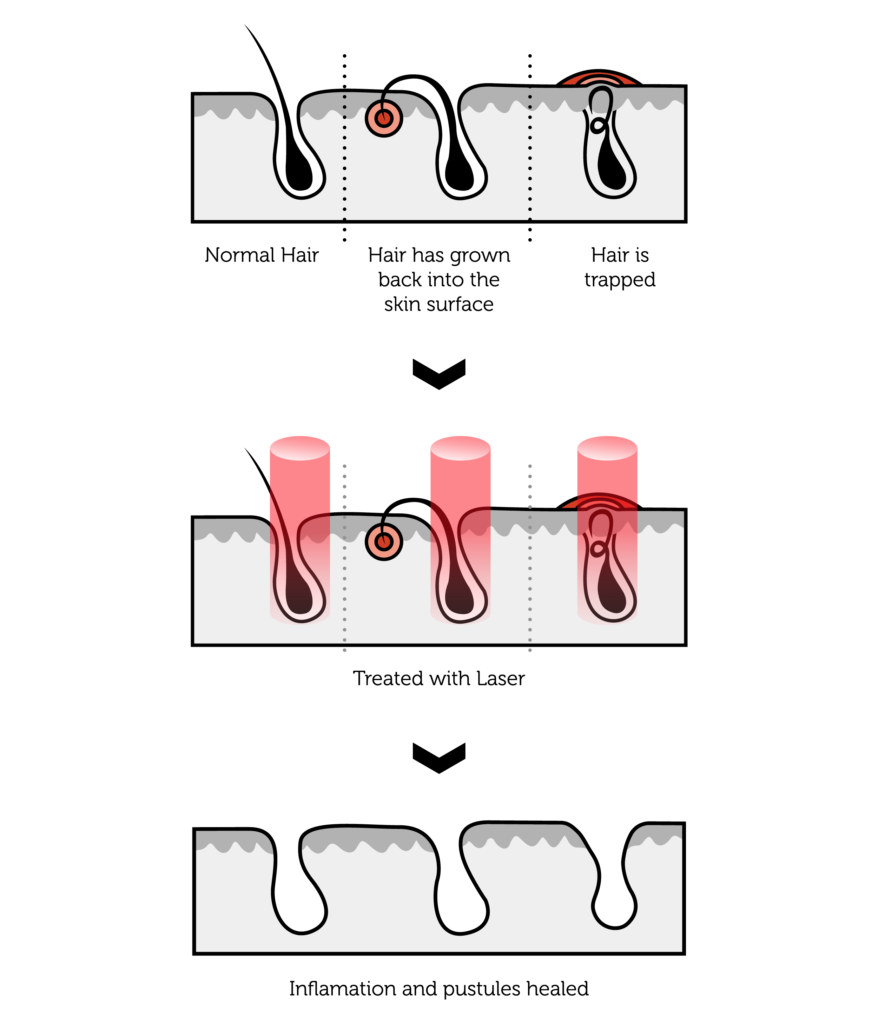
Most common areas are the neck, chin and jaw in men. Women suffering with excess hair growth (hirsutism) in conditions such as polycystic ovarian syndrome (PCOS) develop hair on the chin and neck with resulting folliculitis following shaving. In darker skin types, especially Afro-Caribbean skin, razor bumps also occur in the pubic areas including the armpits, groin and along the bikini line. Persistent ingrown hairs especially after regular shaving, can lead to pustules (pus filled bumps), hyperpigmentation (darkening off the skin) and even hypertrophic and keloid scars.
Razor bumps or pseudofolliculitis can occur in any skin type but is particularly common in Afro-Caribbean men. In fact between 45% to 83% of Afro Caribbean men suffer with pseudofolliculitis (razor bumps) especially over the neck, face and back of the head from aggressive and excessive shaving. Razor bumps are also common in Afro-Caribbean women and generally in those with quite curly hair. It is also specifically very common in the pubic regions due to the curly nature of hairs that grow here.
Ingrown hairs develop following shaving or aggressive trimming. Curly hair, wherever it may occur, is especially susceptible to becoming ingrown if due care is not taken when trimming, cutting or shaving. There are two types of ingrown hair. Both types occur following trimming of the hair. As the trimmed hair grows, due to its curly nature, it can grow out of the skin and curl back into the skin resulting in inflammation and thereby pustules and hyperpigmentation (extra follicular ingrown hair).
Trimmed hairs that are cut even shorter can actually attempt to grow and curl within the hair follicle itself and become ingrown underneath the skin. This again results in significant inflammation, pustule formation and hyperpigmentation. When there is repeated trimming, cutting or shaving off ingrown hairs can become infected and scarring can result eventually leading to, in the worst case scenarios, to hypertrophic and keloid scars.
Medical laser hair removal has been found to significantly help with razor bumps. Treatment with laser results in the destruction of the hair follicle at the centre of the razor bump. Once destroyed the ingrown hair becomes thinner and thinner and eventually disappears. With no hair at the centre of the razor bump there is no ongoing cause of inflammation and infection. The bumps are then able to heal and regenerate. Pustules do not recur and any pigmentation starts to lighten. Significant scarring can then be treated using alternative treatments and the overall area improves in appearance.
Razor bumps in the beard region over the neck and below the chin, sides of the face and the chin itself, as well as around the nape of the neck respond extremely well to laser treatment. Laser treatment of the pubic region including the armpit and the bikini line also help greatly with razor bumps and pigmentation.
Acne Keloidalis Nuchae
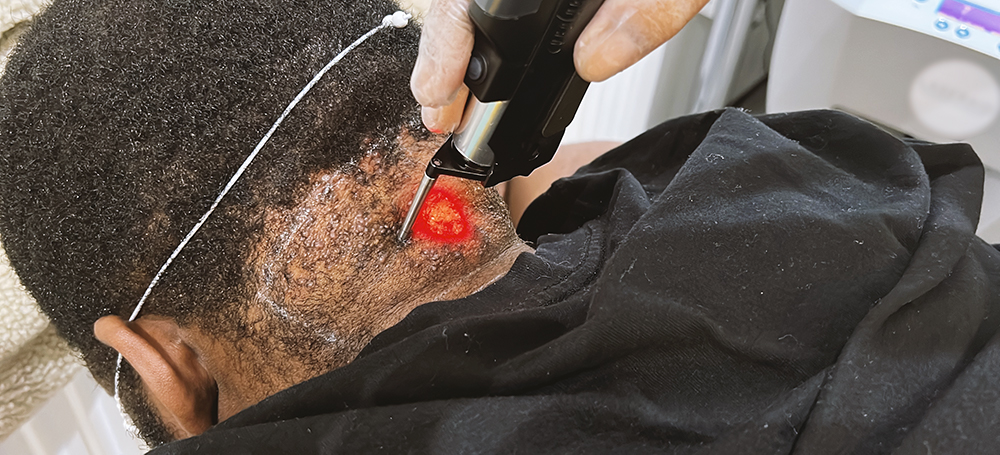
Acne Keloidalis Nuchae is another condition similar to both dissecting cellulitis and folliculitis decalvens. It is slightly unclear as to the specific cause of this condition. It involves the development of chronic irritation and occlusion of hair follicles around the nape of the neck and back of the scalp specifically from haircutting practices. Those most at risk of this condition are young Afro-Caribbean males who use aggressive trimming and shaving techniques for skin fades around the sides and the back of the head.

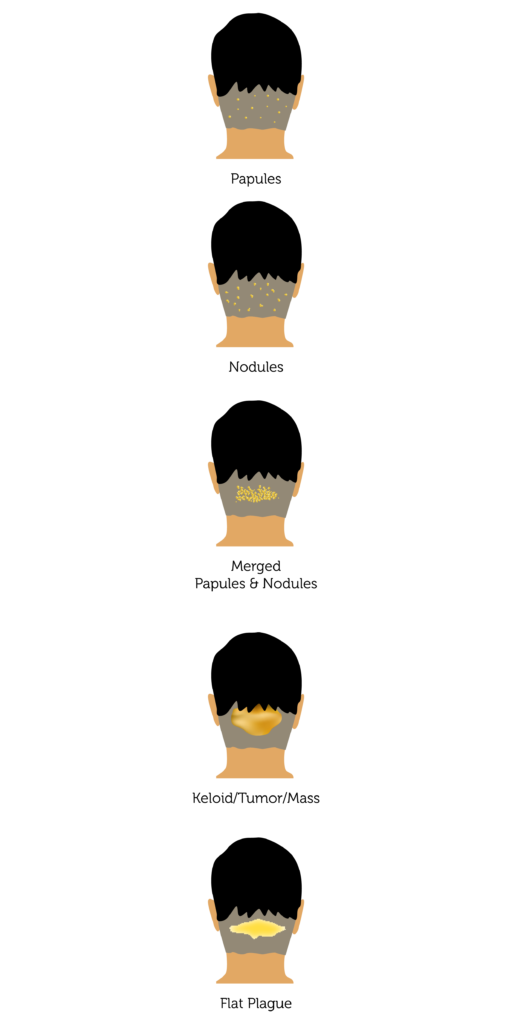
Following shaving or trimming of hairs at the back of the scalp patients often develop inflammation at the base of the hair follicles called folliculitis. This folliculitis results in irritation and itching and leads to cuts and breaks in the skin. This results in the formation of hypertrophic and keloid scars alongside ingrown hairs. Repeated irritation and inflammation from the ingrown hairs results in a chronic vicious cycle of infection and re-infection as well as increasing size of keloid scars.
Recognised treatment options include steroid injections into the scars, long-term antibiotics, surgical excision and anti-inflammatories.
New research has shown that the use of Nd:YAG laser can help significantly break the vicious cycle of chronic infection and reinfection by destroying the hair follicles of any ingrown hairs trapped within the keloid. This allows infection to settle and for the skin of the scalp to heal. This can then be followed up with steroid injections to reduce the size of the keloid scars as well as, if possible, surgical excision.
Laser treatment is especially good for smaller sized lesions usually dotted around the back of the neck and along the side of the scalp. These can often be extremely difficult to treat with steroid injections. Larger keloid are more amenable to steroids and possible surgical removal.
Complications of treatment include thinning of hair in the areas of treatment. This can be long-term in nature however, often hair will grow back after a few years. Despite this the vast majority of patients prefer to have thinner or no hair at all if it means a reduction in the extent of folliculitis and keloid scarring associated with this condition. Laser treatment can be painful and are always accompanied by cooling with our cryogen head as well as topical anaesthetic cream.
Pilonidal Sinus
Pilonidal sinus is a painful condition associated with recurrent abscesses and infections in the natal cleft. The natal cleft is an area at the base of the spine just above the buttocks. This condition tends to be more common in men than women and on average affects 26 to 28 people per 100,000 of the population. There is also an increased risk of pilonidal sinus in the Caucasian population.
The main symptoms associated with this condition include recurrent infections resulting in pus-filled abscesses. The treatment of choice is normally complete surgical drainage of any abscesses and removal of the sinus (a cavity resulting from the destruction of soft tissue in an area just above the buttocks at the base of the spine). Unfortunately the rate of recurrence, despite surgical treatment, is relatively high ranging from 11 to 14%. Most cases of pilonidal sinus are associated with excessive hair growth in this area. Multiple studies have shown that recurrent pilonidal sinus is the result of ingrown hairs.
More recent studies have shown that medical laser hair removal can be a unique treatment that can help to reduce the recurrence of pilonidal abscess especially following surgical treatment. Specifically the use of alexandrite or Nd:YAG laser has been found to be extremely effective at destroying ingrown hairs and the associated hair follicles. This in turn significantly reduces the rate of recurrence.

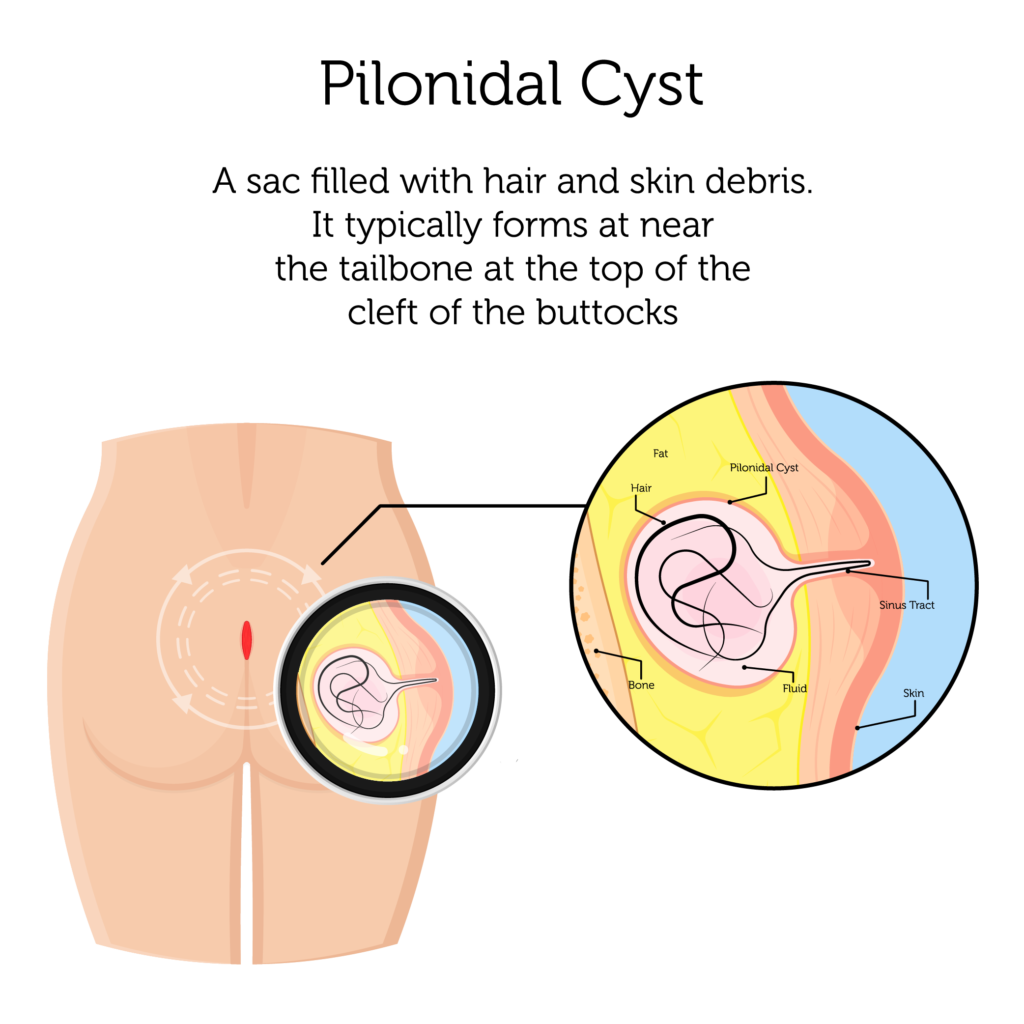
Hidradenitis Suppurativa
This is a chronic and painful condition resulting in the development of small painful lumps under the skin. They usually occur in areas where the skin rubs together such as the armpits, groin, buttocks and between and below the breasts. Excessive sweating and persistence of fluid results in boils and these can break open and result in the release of fluid and pus. This condition specifically affects apocrine sweat glands that are associated with hair follicles.
Hidradenitis suppurativa occurs in 1 per 100 of the population and specifically affects Caucasians and Afro-Caribbeans. It is not as common in Asians or south-east Asians.
Treatments for hidradenitis suppurativa include wearing loose clothes, careful washing of the affected areas using antibacterial soap, avoiding shaving, deodorants and antiperspirants. Medical treatment includes topical and oral antibiotics, steroids to reduce inflammation, topical retinoids (creams containing vitamin A) as well as immunosuppressant medication.
Surgical treatments include drainage of infected boils and in extreme cases removal of affected areas of skin specially in the presence of severe scarring and abscesses.
Laser hair removal with Nd:YAG in the affected area has been shown to significantly improve inflammation as well as the recurrence of boils especially in the armpits and groin. This is thanks to the destruction of the hair follicles and together with this the apocrine sweat glands.
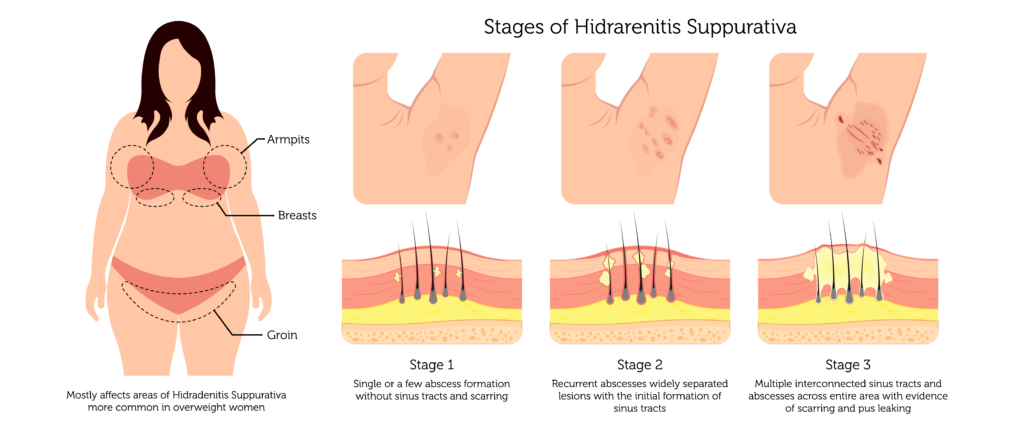
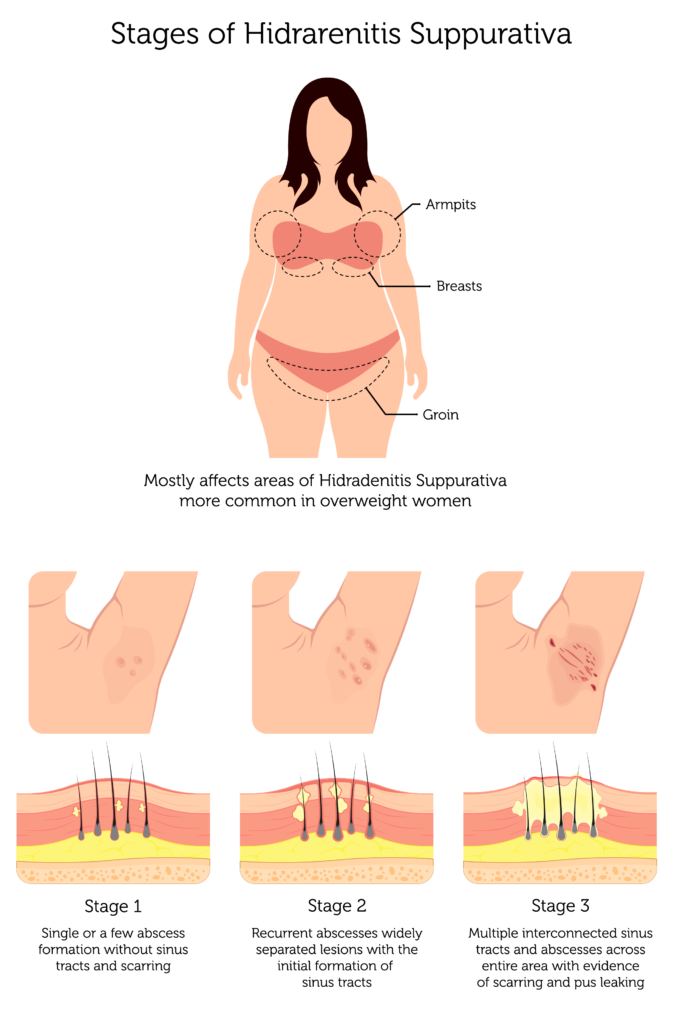
Dissecting Cellulitis
Dissecting cellulitis of the scalp is a chronic inflammatory condition. It is also known as dissecting folliculitis or Hoffman’s disease. The vast majority of those suffering with this condition are young black men accounting for almost 90% of cases with young white men accounting for the remaining 10%. Dissecting cellulitis is similar to hidradenitis suppurativa but isolated to the scalp. It is thought to be the result of blockage of hair follicles with sebum (oil) and keratin (scaly skin) in the hair follicles. This can eventually lead to the hair follicle bursting!
This results in an inflammatory response and damage to the scalp and can lead to development of abscesses (filled with pus) on the scalp. These become infected and then burst. As these heal they can form hypertrophic, or in severe cases, keloid types scars across the scalp. With this scarring patients ultimately develop alopecia.
Treatment options for patients with dissecting cellulitis are limited. A combination approach is needed. Long-term antibiotics help with abscess formation. Steroid injection into the resultant keloid scars help to reduce them in size. Some also advocate the use of anti-inflammatory medication. Sometimes surgical excision of some of the lesions can be helpful.
At Rejuvence we have experience of treating dissecting cellulitis with a combination of antibiotics and steroid injections. In keeping with new research we are also offering Nd:YAG laser for dissecting cellulitis.
Nd:YAG laser is most commonly used for laser hair removal and darker skin types as it is safer on darker skin thanks to its selective absorption by melanin in hair follicles as opposed to melanin in the skin. In addition it can penetrate to 4 mm which is more efficient for darker skin types.
The Nd:YAG laser destroys hair follicles and the pilosebaceous unit. Hair follicles and the pilosebaceous unit as a whole are specifically responsible for this condition. The blockage of the hair follicles with sebum or keratin result in the hair follicle exploding leading to infection and abscess formation. By destroying the hair follicle and pilosebaceous unit with laser the chronic infection and inflammation stops and the abscess starts to heal and settle. In addition the keloid type scars on the scalp also start to improve and when combined with steroid injections can reduce in size.
There are some complications associated with laser treatment for dissecting cellulitis. These include possible long-term loss of hair in the treated areas of the scalp as well as changes in skin colour, specifically hypo or hyper pigmentation. The treatments can also be painful but the laser treatments are combined with a cooling head and sometimes topical anaesthetic creams and or anaesthetic injections are also administered.
Dissecting cellulitis is an extremely difficult condition to treat and is associated not just with painful abscesses and disfiguring keloid scars but also significantly affects patients psychologically. There is very little treatment available on the NHS. At Rejuvence we are dedicated to trying to provide cutting-edge treatments at affordable prices. Book now for a consultation with one of our doctors and we can put together a bespoke treatment package to try and treat this painful and difficult condition.
Folliculitis Decalvens
Folliculitis Decalvens is a chronic inflammatory condition similar to dissecting cellulitis and can often be difficult to distinguish. As with dissecting cellulitis folliculitis decalvens is the result of inflammation of hair follicles and often associated with infection with a bacteria called staphylococcus aureus. It results in redness around the base of the hair follicle and can develop pustules. Eventually these pustules can permanently damage hair follicles leading to a scarring alopecia. This condition predominantly affects males later in life, specifically Afro-Caribbean males.
Treatment options are limited and similar to dissecting cellulitis including antibiotics, steroid injections and in some cases surgery. Treatment with Nd:YAG laser can help to bring this condition under control with a series of monthly treatments.
What will happen at my first consultation?
For Medical Laser Hair removal, consultations are carried out by our team of aesthetic doctors. This is headed up by Dr Ghani who is a specialist in aesthetic medicine. Your medical condition will be assessed and our doctors will take an extensive history and conduct a thorough examination of your condition. Following this we will design a tailored treatment program which is likely to consist of a combination of treatments as well as a specific protocol for laser treatment. Treatment options include intralesional steroid injections, long-term antibiotics, cryotherapy, and in certain cases even surgical excision alongside laser treatment with Nd:YAG.
We will arrange for a series of laser sessions to be administered by our lead laser aesthetician – Rita Al-Moula. Your laser treatment will begin following your initial consultation with one of our doctors. Prior to your laser session our doctors will have a discussion with our team of laser practitioners to decide on the protocol to be used for your condition. Our team of laser practitioners work closely with our team of doctors to offer you the best possible care.
For all of our medical laser hair treatments we normally have a doctor present in the room whilst our laser practitioner conducts the treatment. This is to ensure that there are no complications and if any medication in the form of anaesthetic injections or simultaneous steroid injections are needed dependent on the specific tailored treatment program set up.
Once all laser sessions have been completed you will have a follow-up with Dr Ghani who will review the success of the bespoke treatment program set up for your condition. At this point Dr Ghani will decide on whether further treatment is necessary and if so in what form.
At Rejuvence we are unique and provide Medically Supported Laser Hair Removal services thanks to our team of aesthetic doctors and laser aestheticians. Book an appointment to get a free consultation and assessment of your laser hair removal needs.













